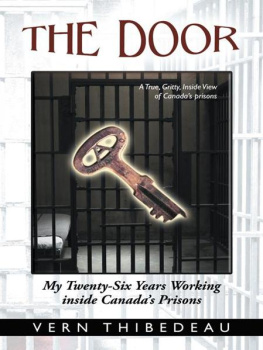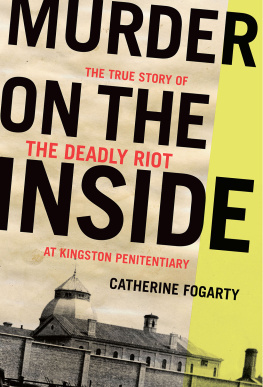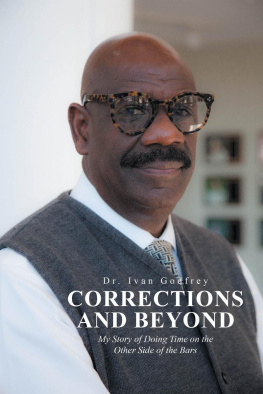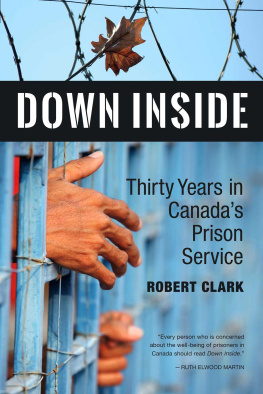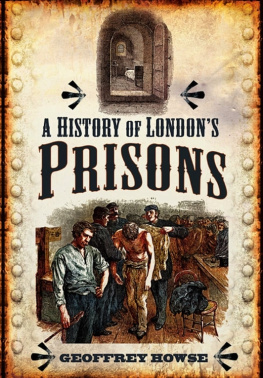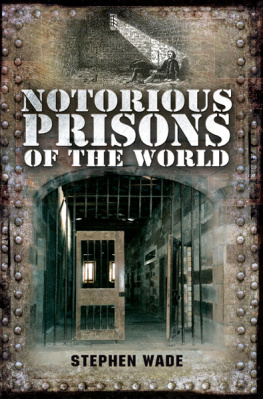THE DOOR
My twenty-six years working inside
Canadas prisons
VERN THIBEDEAU
iUniverse, Inc.
Bloomington
THE DOOR
MY TWENTY-SIX YEARS WORKING INSIDE CANADAS PRISONS
Copyright 2012 by Vern Thibedeau.
All rights reserved. No part of this book may be used or reproduced by any means, graphic, electronic, or mechanical, including photocopying, recording, taping or by any information storage retrieval system without the written permission of the publisher except in the case of brief quotations embodied in critical articles and reviews.
iUniverse books may be ordered through booksellers or by contacting:
iUniverse
1663 Liberty Drive
Bloomington, IN 47403
www.iuniverse.com
1-800-Authors (1-800-288-4677)
Because of the dynamic nature of the Internet, any web addresses or links contained in this book may have changed since publication and may no longer be valid. The views expressed in this work are solely those of the author and do not necessarily reflect the views of the publisher, and the publisher hereby disclaims any responsibility for them.
Any people depicted in stock imagery provided by Thinkstock are models, and such images are being used for illustrative purposes only.
Certain stock imagery Thinkstock.
ISBN: 978-1-4620-2924-2 (sc)
ISBN: 978-1-4620-2926-6 (hc)
ISBN: 978-1-4620-2925-9 (ebk)
Printed in the United States of America
iUniverse rev. date: 1/4/2012
Contents
I started this memoir at the urging of my family, for which I am forever grateful. I also wish to give my heartfelt thanks to my brother, Dan, who, even though he was ill at the time, spent hours editing The Door .
First, I would like to say that I sincerely hope I havent offended anyone. I imagine a few staff may be upset with me, but I have tried to be honest; so what can I say?
I want everyone to know that, except for one officer, I havent used last names; however, there are several first names I didnt change. All inmate names have been changed except for those of three or four notorious criminals who received countrywide publicity.
I hope I dont sound overly bitter; Im not. Just as in any job, there were ups and downs, but usually, corrections treated me fairly, and it was a very good career. I also had the pleasure of working side by side with some very accomplished and dedicated staff.
There are a couple of things I hope this book will accomplish. I realize that penitentiaries are a mystery to the average citizen, and that is certainly understandable. I hope this will alleviate some of that mystery and perhaps help people understand a little of what goes on within them.
Second, I hope everyone comes to understand some of what the people employed in a correctional setting must deal with. I must admit this pertains mostly to correctional officers, but it does relate to all staff.
In my mind, almost all correctional officers are heroes. About the few who dont meet this standard, well, what can I say? They know who they are. I must insist, though, that almost all staff in the prison system do an excellent job in extremely adverse circumstances and almost never receive any recognition for their efforts.
I hope this memoir will demonstrate that a correctional officer is usually an average person working in an extremely stressful and difficult environment with people who, for the most part, are emotionally immature and in some cases mentally unstable, and some of whom can and do become dangerous. In addition, long after most of the public have forgotten murderers like Olson, Bernardo, and Williams, correctional staff still must deal with them day in and day out, usually for years.
All the incidents I have written about did happen. Because of the time that has elapsed and lack notes, there may be some minor variations from actual events. Also, the chronological order may not be exact. I should also mention that I have not covered all the situations I was involved in or know about. To do that would take a better memory than I possess and more paper and ink than I can afford.
In closing, I sincerely wish to give a tip of the hat to correctional officers and their families. The Door was written for them.
I hope you find it interesting.
Vern Thibedeau
AOD: Absent on duty.
Bingo: A slang term signifying that the institutional count is correct.
CBI: Collins Bay Institution, also called the Bay or Disney World.
CCO: Chief of correctional operations.
CMO: Case management officer.
CO: Correctional officer.
CX: A pay grade, also used as a rank.
CX 1: A correctional officer in a minimumor medium-security institution.
CX 2: A correctional officer in a maximum-security institution.
CX 3: A senior correctional officer in a minimumor medium
security institution.
CX 4: A senior correctional officer in a maximum-security institution.
CX 5: A supervisor in a minimumor medium-security institution.
CX 6: A supervisor in a maximum-security institution.
Dissociation: A secure area within segregation, also called diss or hole.
D/W: Deputy warden, also referred to as the 2 I/C of an institution.
ECA: Environmental control area, also known as segregation.
ETA: Escorted temporary absence, usually for a doctor appointment or similar.
FPS: Finger print system, a number assigned to convicted persons.
Hanger: A person who has attempted to hang himor herself.
Haven: Millhaven Institution, also called the Mill.
IDB: Inmate disciplinary board, chaired by a lawyer.
IERT: Institutional emergency response team.
IPSO: Institutional preventive security officer.
JI: Joyceville Institution, also called the Ville.
Jug up: Inmates meal time.
Keeper: Correctional supervisor, CX 5 or 6.
KP: Kingston Penitentiary.
OP: Off privileges.
OPP: Ontario Provincial Police.
PC: Protective custody.
P4W: Prison for women.
Pen Squad: OPP squad that investigates crime in penitentiaries in the Kingston area.
QPP: Quebec Provincial Police.
Range: A large hallway in a cell block or living unit that contains cells.
RTC: Regional treatment center, also called TC, an area inside KP.
Seg: Segregation, a secure area inside an institution.
SHU: Special handling unit, a highly secured unit for inmates who have committed a serious crime while under sentence.
Slasher: A person who has cut himor herself to gain attention or commit suicide.
UM: Unit manager.
UTA: Unescorted temporary absence, classed as a rehabilitation escort.
V&C: Visits and Correspondence, the department responsible for all visitations and mail going in and out of correctional institutions.
I first saw the Door on April 10, 1973.
I dont recall the exact time, but I remember the weather: it was damp, with angry black clouds crashing into each other, and I was vehemently hoping this was not a sign of my future. And my emotionsthey were a mixture of extreme excitement and a large dose of very real apprehension. You do tend to have mixed emotions when you are embarking on a unique career. You have no way of knowing if you are going into a tailspin or flying to the moon. But because I was stepping into a very weird and unusual environment, you can bet I was the owner of a large dose of fear.
When I first stood in front of the Door, I didnt realize the impact it would have on my family and me. I also did not visualize the drastic changes it would make in my life. If I could have had an insight into those changes, I might very well have turned around and run from the Door.
The Door was immense. Most doors are made to allow one or two people to enter or leave at one time. Doors also usually have an aura around them that says, Welcome. The Door seemed to scream a warning to leave.
Next page
